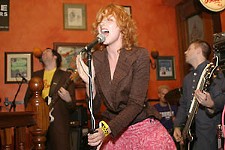FM: The Rise and Fall of Rock Radio
Sheet Music
Reviewed by Jerry Renshaw, Fri., Oct. 12, 2001

FM: The Rise and Fall of Rock Radio
by Richard NeerVillard Books, 350pp. $24.95
It's no revelation that if you get in your car, drive for several hours, your choices for rock radio will most likely be numbingly bland and uniform as you drive from one region to the next. It wasn't always this way, of course; at one time, rock radio was a vibrant and interesting medium, with stations and jocks staking out well-defined personalities for themselves. Richard Neer spent 30-plus years in rock radio, primarily at New York's WNEW, and his recollections are an interesting, if exasperating, read. The earliest chapters of FM discuss Neer's days in college radio at Adelphi University on Long Island, the author going on to detail the earliest days of FM radio, including the behind-the-scenes maneuvering that went into carving out FM's band spectrum. Starting in the Fifties, the agenda was set by Top 40 AM stations, as jocks actually had some leverage over what they played and could help push a record or artist -- all of which began to change after the late-Fifties "payola" scandal. By the late Sixties, FM was beginning to assert itself and Top 40 AM stations were beginning to sound somewhat irrelevant in light of the changes in rock music and society at large. This is where Neer's account falls apart; immersed in music-can-change-the-world hippie claptrap, he recounts stories of his own personal experiences. Much of the book continues in this fashion, and it's difficult to divine from Neer's rambling personal accounts exactly how market forces and mass-ownership issues began to change FM rock from "progressive radio" and "free form" to the stale, hidebound formats of today. That having been said, it's still an entertaining read. Just don't come into it expecting a historical discourse on how rock radio evolved into what it is today.










